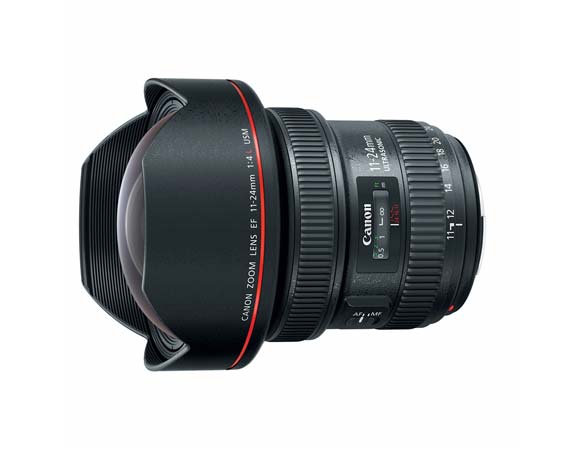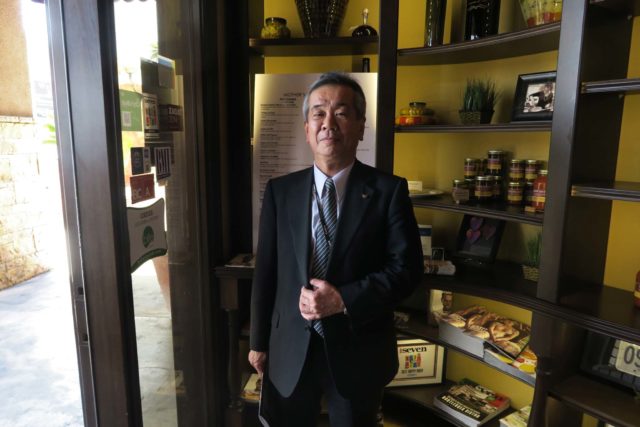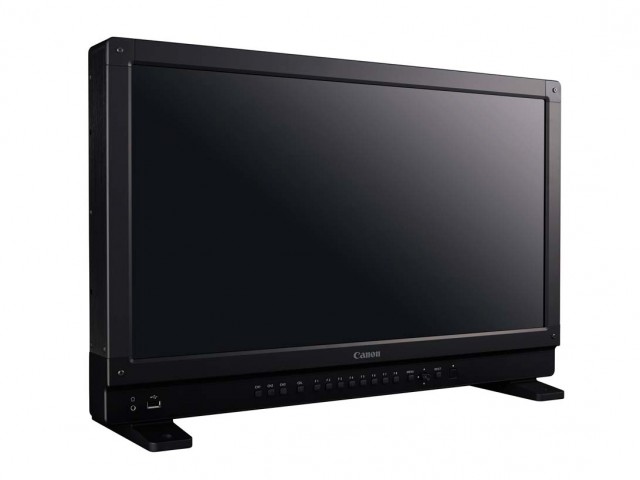Mr. Masaya Maeda, Managing Director and Chief Executive of Image Communication Products Operations at Canon, might be hinting at the future: HDR, larger pixels, larger sensors…
“Lunch with the FT” is a weekly column in the Financial Times. Their prandial interviews with a leading cultural or business luminary was something we have been doing—but to paraphrase Virginia Woolf, “It’s dinner one wants, not lunch.”
Wasn’t it Michael Douglas as Gordon Gekko who said, “Lunch? Aw, you gotta be kidding. Lunch is for wimps.”
“Lunch, one hour,” is the common call of the AD. Lunch is an interlude. Dinner is a reward. No matter how long or tough the day, a good dinner with colleagues after wrap on location is a reward not to be missed.
It was therefore a pleasant surprise to receive an email from Mr. Hitoshi Doi, head of the Future Product & Solution Group at Canon U.S.A. “Jon,” he wrote, “Can you slip away for a couple of hours during NAB to have lunch with Mr. Maeda and me?”
Mr. Masaya Maeda is Managing Director and Chief Executive of Image Communication Products Operations at Canon. I was delighted by the prospect of seeing him again. And I relished the chance of escaping the prospect of standing in line for an NAB ordeal of toxic fast-food. Mr. Doi proposed meeting at Ferraro’s, a family-run Italian restaurant and wine bar just minutes from the LVCC.
There was but one wrinkle. Ferraro’s is highly regarded by Zagat: expertly prepared osso buco, “huge bone with lots of marrow,” homemade pastas, and a “deep”, 1,000-bottle wine list. At dinner with Mr. Maeda in Tokyo and again in Las Vegas last year, we both recognized a shared appreciation for Chateau Margaux 2005. A repeat performance of robust Bordeaux to accompany homemade pasta primi, heavy secondi, hot Nevada midday sun—these did not bode well for my reporting back to duty at NAB later that afternoon. As Clint Eastwood’s Dirty Harry said, “A man’s gotta know his limitations.”
If it weren’t located in a sun-baked asphalt strip mall across from the Hard Rock Hotel, Ferraro’s could be in New York. The décor is Las Vegas Tuscan: dark wood and leather. A familiar gentleman greets me. It’s Jack Watanabe, who guided us across Japan during a visit to Canon last year. He leads me to a private room.
Mr. Maeda and Mr. Doi are waiting. Mr. Maeda has just landed from Tokyo, and we are both thirsty. The wine list is as thick as a telephone book, if anyone remembers what those were. We decide against Margaux at midday, and agree on a glass of Berlucchi Franciacorta Brut from Lombardy.
“The last time we met, you spoke about your dream of photographing black crows on a moonless night,” I say. “Are we getting any closer?”
Mr. Maeda raises his glass. “Maybe a little closer.” He agrees that filming in low light is a passion of his.
“And is that the wave of the future for cinema and stills—capturing at lower and lower light levels, without flash or light?” I ask.
Mr. Maeda smiles and says, “It’s in the near future. For both cinema and stills – for both applications.”
Plates of pappardelle pasta pomodoro appear, topped with fresh tomatoes, basil, and fresh ricotta cheese. A classic Caesar salad follows. The portions are enormous. This being the second day of NAB, discussion inevitably turns to RED’s announcement, the day before, of a 21.60 x 40.96 mm large sensor camera. I delicately wonder whether we might expect to see Canon going toward larger sensor cine cameras. After all, Canon’s 5D Mark II first propelled us along this route.
Mr. Maeda replies, “It is a challenge how far we can go with dynamic range and sensitivity using current APS-C or Super 35 size sensors. A larger sensor size is actually more advantageous because a larger pixel pitch will be more sensitive.”
As if on cue, we are served large platters of Risotto Funghi Porcini e Prosciutto, made with pixel-like Riso Nano Vialone Veronese.
We continue the conversation. “If there is a limitation to the 18×24 Academy format or APS-C size, what are the challenges of going to a larger size, like 24×36 Full Frame Still Format popular on your DSLR cameras?”
Mr. Maeda says, “Larger pixel sizes are an advantage in low light. And we are not restricted to the Super 35 size by the silicon wafer itself.” I think he leaves the rest of the reply up to my imagination.
Mr. Doi adds, “At the moment, cinematographers seem addicted to bokeh effects, but not by gigantic lenses. That is a dilemma.”
I wonder about another dilemma—what kind of mounts will future cine lenses have and would there be a universal standard mount—as cannoli filled with smooth ricotta, sugar and cinnamon arrive. We cannot help but paraphrase from The Godfather: “Leave the camera, take the cannoli.”
Perhaps the cannoli or the Gordon Willis-like lighting in the restaurant encourage Mr. Maeda to think historically. He says, “The Wright brothers flew their airplane at Kitty Hawk in 1903. Henry Ford introduced his Model T automobile protoypes in the same year, 1903. Even though aircraft and automobiles were introduced more than a century ago, they have greatly improved over the years. Just as they experienced technological progress, so should cameras and lenses. Digital cameras are still relatively young, so we are almost at the beginning.”
Mr. Doi says, “DSLR cameras started in the analog era, with mirrors, and now we may not need mirrors. There is a lot of innovation. Electronic viewfinders are getting better, and there is no latency. Without mirrors, the flange depth can be shorter, and the lenses could perhaps be smaller.”

Canon EF 11-24 mm f/4L USM Wide Zoom: rectilinear full-frame 24×36 mm DSLR lens. Diameter: 4.3 in. Weight: 41.6 oz.
Mr. Maeda interjects. “I like down-sizing – making the size of the camera system and lenses smaller. Did you try our new lens, the 11-24 wide rectilinear zoom? It’s one of my favorite lenses. It’s also quite small. And have you seen our new HDR displays?”
Not yet. I promise to have a look, and ask, “Will HDR become popular only for monitors or will it be used in cameras as well?”
Mr. Maeda replies, “HDR is a given these days. For Canon, it will be an important technology on the camera side as well as the monitors. They will have equal importance. Along with our new HDR displays in the Canon booth, we have a prototype HDR monitor of 2000 nits. You will enjoy seeing it and I hope you receive a good explanation.”
With the invitation to see new HDR displays back at NAB, our delightful and insightful lunch with the FDT concluded. But it was just the beginning of my introduction to the technology of HDR displays, which is reported elsewhere in FDT issue 70.










